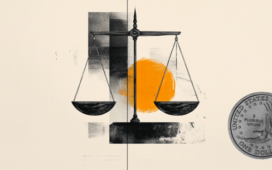
Reserve Bank of Zimbabwe
THE Reserve Bank of Zimbabwe (RBZ) says gold reserves have risen 12% to over 3,1 tonnes since March, with the bank projecting it needs two to three years to reach six months of forex cover.
As of March, the bank had US$629 million worth of forex cover consisting of US$296 million in nostro accounts from mostly export retention proceeds, US$274 million worth of gold, and ZiG3,8 billion.
The gold is derived from the payment of royalties, wherein half of the royalties are paid using the mineral that has been traded.
These measures were introduced to make the country’s domestic currency a commodity-backed legal tender amid a decline in confidence in monetary and fiscal policies.
In the RBZ’s Snapshot on Recent Monetary, Currency, Price and Financial Developments report released on April 5, the bank recorded gold cover of approximately 2 771 kilogrammes (2,77 tonnes) as of March.
However, during the Chamber of Mines of Zimbabwe’s annual conference held in Victoria Falls last week, it was revealed that the cover now stands at over 3,1 tonnes, up 12% from the March figures.
“As I speak to you today [last Friday], we have more than 3,1 tonnes of gold we have accumulated in only one year,” RBZ deputy governor Innocent Matshe said during the conference.
He added that achieving six months’ worth of import cover in reserves was possible within two to three years, with support from increased mineral output and in-kind royalty payments.
Zimbabwe joined the World Bank’s Reserves Advisory and Management Programme in April, which aims to help central banks manage reserves professionally and transparently.
“But it’s not only the accumulation of reserves. It’s also to make those reserves work. We need to sweat the reserves,” Matshe said.
The mining sector remains the backbone of the country’s export earnings, contributing US$5,9 billion out of the US$8,3 billion total mineral exports in 2024.
Matshe said the mining sector raked in US$1,4 billion in this year’s first quarter.
“This is how key this sector is to this economy. Mineral exports are mainly driven by gold, PGMs [platinum group metals], lithium, and, of course, diamonds,” he said.
Addressing surrender requirements, wherein exporters must surrender 30% of their export earnings, thus lowering resources for capital-intensive industries like mining, Matshe said this would continue to be reviewed. He added that this would be done in line with increasing transactional use of the ZiG.
“We want de-dollarisation to be a process. We all need that as a country. We need it so that it doesn’t disrupt business. It doesn’t disrupt your processes as producers,” Matshe said.
He called for continued dialogue among RBZ, the mining sector and industry leaders to build consensus and confidence around the ZiG and the broader macroeconomic reform process.
“We are not blind to the concerns raised by industry players and the wider public. We know that confidence must be earned and sustained, not demanded,” Matshe said.
“That’s why we are ensuring transparency in our monetary operations, consistent communication and regular reviews of key policy instruments.”

